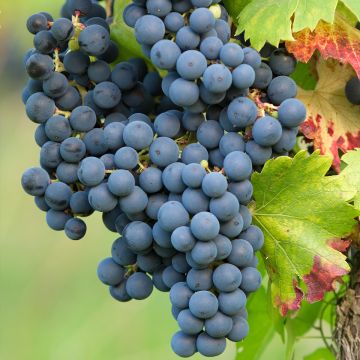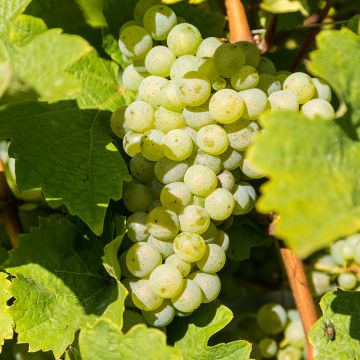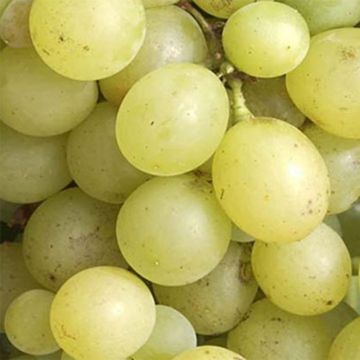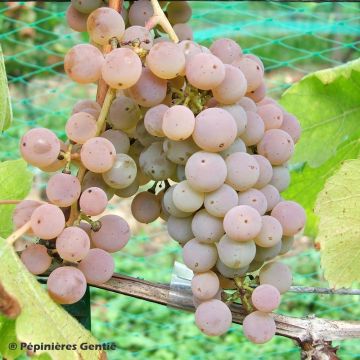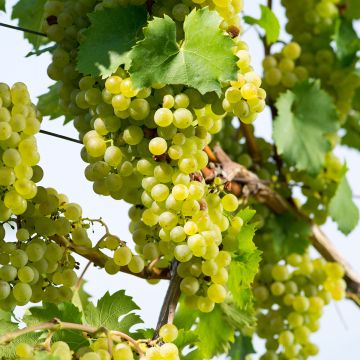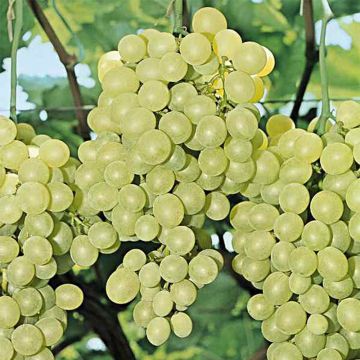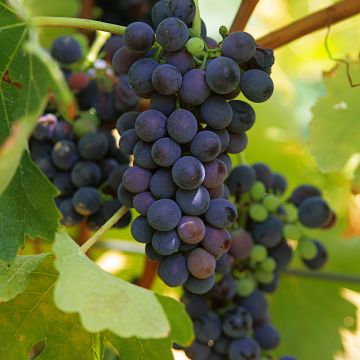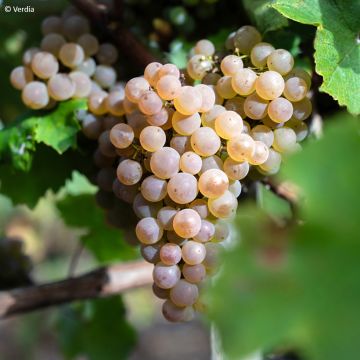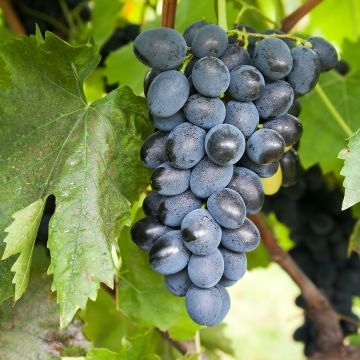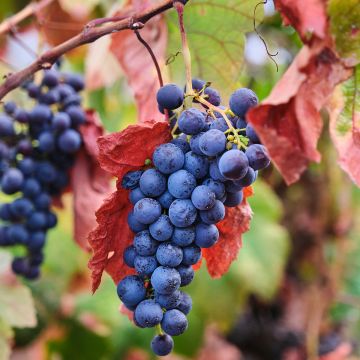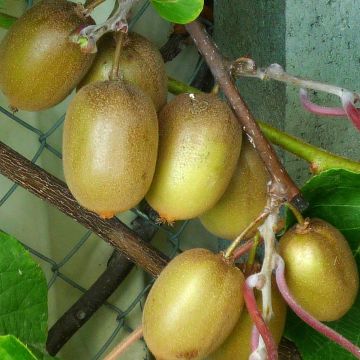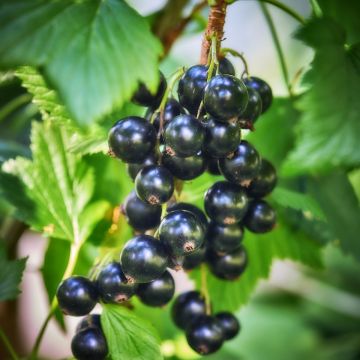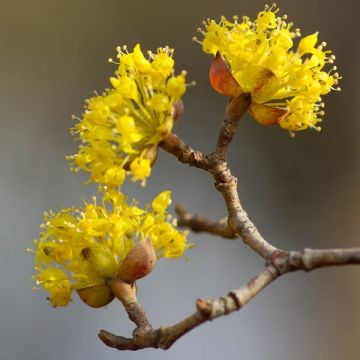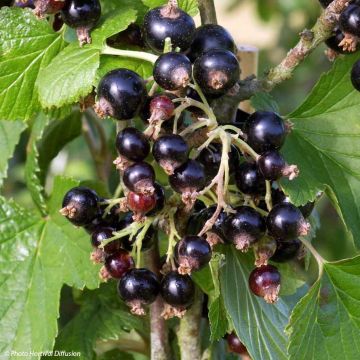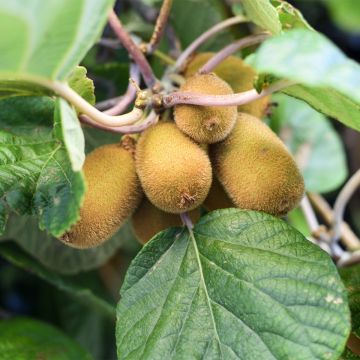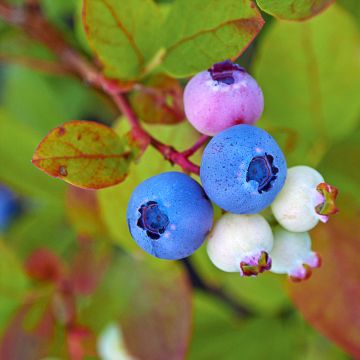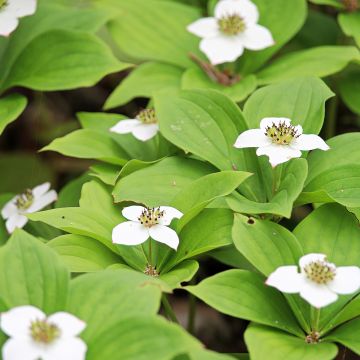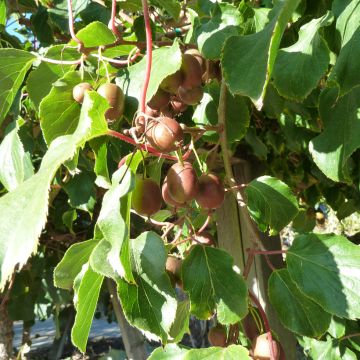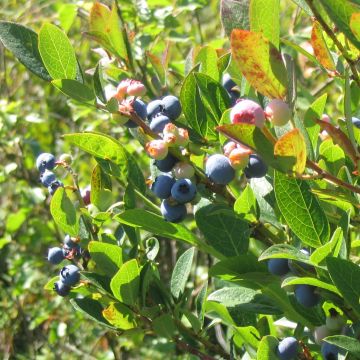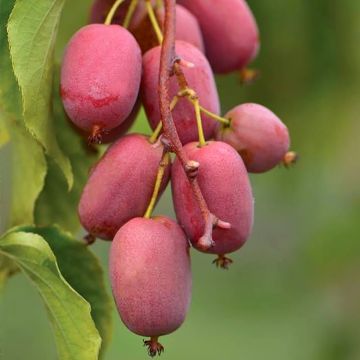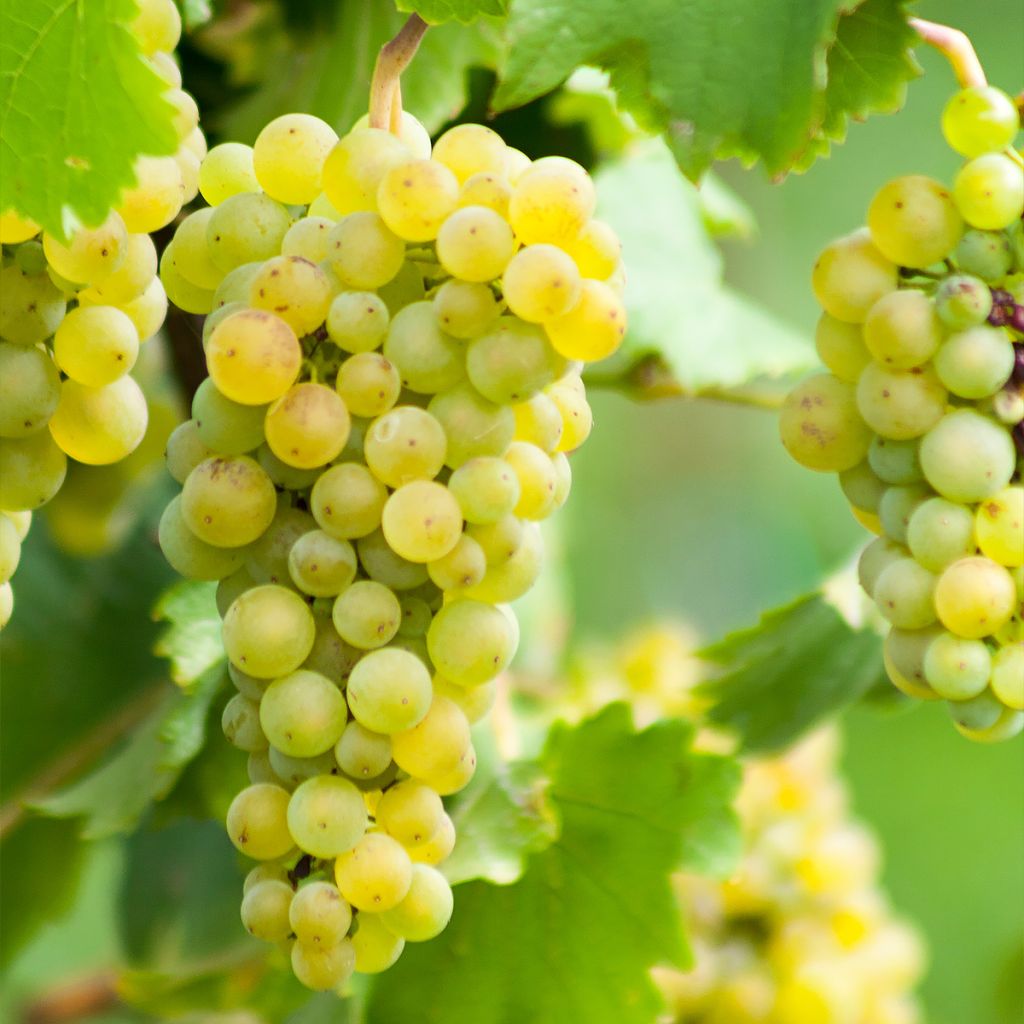

Vitis vinifera Ora - Grape vine
Vitis vinifera Ora - Grape vine
Vitis vinifera Ora ZPd4
Common Grape Vine, European Grape, Wine Grape
This item cannot be shipped to the selected country
Delivery charge from €5.90
Delivery to Corse prohibited
More information
Delivery charge from €5.90
Delivery to Corse prohibited
More information
Schedule delivery date,
and select date in basket
This plant carries a 6 months recovery warranty
More information
We guarantee the quality of our plants for a full growing cycle, and will replace at our expense any plant that fails to recover under normal climatic and planting conditions.
From €5.90 for pickup delivery and €6.90 for home delivery
Express home delivery from €8.90.
Delivery to Corse prohibited: UE law prohibits the import of this plant from mainland France to Corse as part of the fight against Xylella fastidiosa. Please accept our sincere apologies.
More information
Description
The Ora grape is a medium-vigour variety that produces a golden yellow, sweet and firm dessert grape, ready to be harvested from early August depending on the region. The medium to large clusters of fairly large oval berries are not very susceptible to grey rot, but can sometimes burst due to rain. This vine thrives in most neutral to limestone, well-drained soils in sunny locations. It is resistant to cold.
The wine grape (Vitis vinifera) grew wild over 5000 years ago in North and Central America, Europe, and Central and Eastern Asia. The subspecies sylvestris still exists, it is a climbing vine, growing on the edge of forests and capable of reaching great heights in trees. The current grape varieties are classified under the subspecies vinifera (although there are other cultivated species, but very few).
"Ora" is a hybrid obtained in 1968 by Paul Truel from the INRA in Montpellier, by crossing the variety 'Cardinal' obtained in 1939 in the United States with a hybrid resulting from the crossing of Cinsaut (a widespread variety in Provence) and La Perle de Csaba, a Hungarian variety from 1904 with early ripening. The Ora vine is a moderately vigorous climber with a semi-erect to erect habit reaching 3 to 4 metres (10 to 13 feet) high if not pruned. It can be trained with long or short pruning to cover a trellis or arbour. This variety buds 1 week after the Chasselas, a reference variety for vine phenological stages. Its foliage is a beautiful light green, with pentagonal leaves with five lobes, and short to medium teeth all around. It flowers in May depending on the year and region, with very small greenish flowers gathered in fairly large conical and cylindrical clusters. Like most grapes, it is self-fertile.
It is highly productive with medium to large clusters of fairly large oval (elliptical) grapes, initially greenish yellow, turning golden yellow when ripe, from early August in the south (10 to 15 days before Chasselas). These sweet grapes have a thin skin that can burst due to rain and firm flesh. These grapes are not very susceptible to grey rot but can be prone to coulure (abortion or drop of fertilised berries) and millerandage (difference in size and ripeness of berries on the same cluster). It is useful to remove some leaves so that the grapes are well exposed to the sun and can develop their beautiful golden colour, a sign of their taste quality.
The Ora grape can be consumed fresh or as juice in a vitamin-packed fruit cocktail for breakfast, for example. In general, grapes are rich in B vitamins, a good source of fibre and manganese and well-endowed with antioxidants. They are also believed to play a role in preventing cardiovascular diseases and they are a healthy, natural, and tasty dessert. To vary the pleasures and extend the tasting season, plant Ora next to the Fragola Nera vine which produces black grapes with a surprising strawberry flavour. And to stretch the season to the maximum, go for the Solissimo Kiwi, a self-fertile Actinidia that will delight you with its delicious fruits rich in vitamin C in November.
Vitis vinifera Ora - Grape vine in pictures
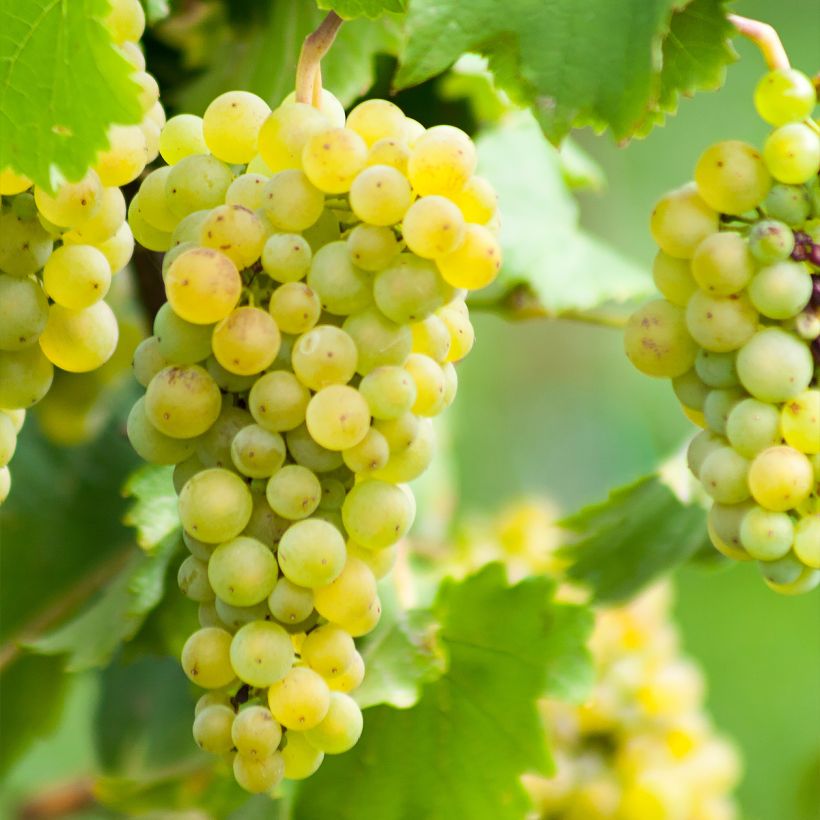

Plant habit
Fruit
Flowering
Foliage
Botanical data
Vitis
vinifera
Ora ZPd4
Vitaceae
Common Grape Vine, European Grape, Wine Grape
Cultivar or hybrid
Other Grapevines
Planting and care
Since the ravages of phylloxera in the late 19th century, vines are now grafted onto different resistant rootstocks adapted to different types of soil. These rootstocks come from American varieties naturally armed against this formidable parasite, itself of American origin.
Plant the Ora vine in autumn, in deep, well-drained, even stony, clayey and limestone soil, as that the vine is undemanding in terms of the chemical nature of the soil. It is capable of adapting to moderately acidic soil (up to pH 6, as below this there are assimilation blocks of certain trace elements), neutral and limestone up to pH 8.5 (knowing that in this case, it is the excess of active limestone that is harmful).
Plant it in a sunny location, sheltered from strong, cold, and dry winds. This variety tolerates winter frosts, it is hardy down to -20°/-25 °C. Incorporate 3 or 4 handfuls of fruit tree fertiliser and 2 kg of composted manure per vine, into the planting soil. Be careful, the roots should not come into contact with the manure. After planting, prune above 2 large buds to get two shoots. Keep the most vigorous one and tie it to a stake. Follow with training pruning, this variety can be trained with either short pruning or long pruning.
The vine does not require regular fertiliser application, quite the opposite for good yield. In overly rich soil, vegetation (leaves) will develop at the expense of fruiting. Enrich the soil with potash, bonemeal or iron chelate, only every 2-3 years.
This grape variety is very resistant to grey rot. It is somewhat sensitive to coulure (drop of young berries) and millerandage (berries of different sizes that do not ripen at the same time).
Planting period
Intended location
Care
This item has not been reviewed yet - be the first to leave a review about it.
Berries
Haven't found what you were looking for?
Hardiness is the lowest winter temperature a plant can endure without suffering serious damage or even dying. However, hardiness is affected by location (a sheltered area, such as a patio), protection (winter cover) and soil type (hardiness is improved by well-drained soil).

Photo Sharing Terms & Conditions
In order to encourage gardeners to interact and share their experiences, Promesse de fleurs offers various media enabling content to be uploaded onto its Site - in particular via the ‘Photo sharing’ module.
The User agrees to refrain from:
- Posting any content that is illegal, prejudicial, insulting, racist, inciteful to hatred, revisionist, contrary to public decency, that infringes on privacy or on the privacy rights of third parties, in particular the publicity rights of persons and goods, intellectual property rights, or the right to privacy.
- Submitting content on behalf of a third party;
- Impersonate the identity of a third party and/or publish any personal information about a third party;
In general, the User undertakes to refrain from any unethical behaviour.
All Content (in particular text, comments, files, images, photos, videos, creative works, etc.), which may be subject to property or intellectual property rights, image or other private rights, shall remain the property of the User, subject to the limited rights granted by the terms of the licence granted by Promesse de fleurs as stated below. Users are at liberty to publish or not to publish such Content on the Site, notably via the ‘Photo Sharing’ facility, and accept that this Content shall be made public and freely accessible, notably on the Internet.
Users further acknowledge, undertake to have ,and guarantee that they hold all necessary rights and permissions to publish such material on the Site, in particular with regard to the legislation in force pertaining to any privacy, property, intellectual property, image, or contractual rights, or rights of any other nature. By publishing such Content on the Site, Users acknowledge accepting full liability as publishers of the Content within the meaning of the law, and grant Promesse de fleurs, free of charge, an inclusive, worldwide licence for the said Content for the entire duration of its publication, including all reproduction, representation, up/downloading, displaying, performing, transmission, and storage rights.
Users also grant permission for their name to be linked to the Content and accept that this link may not always be made available.
By engaging in posting material, Users consent to their Content becoming automatically accessible on the Internet, in particular on other sites and/or blogs and/or web pages of the Promesse de fleurs site, including in particular social pages and the Promesse de fleurs catalogue.
Users may secure the removal of entrusted content free of charge by issuing a simple request via our contact form.

































